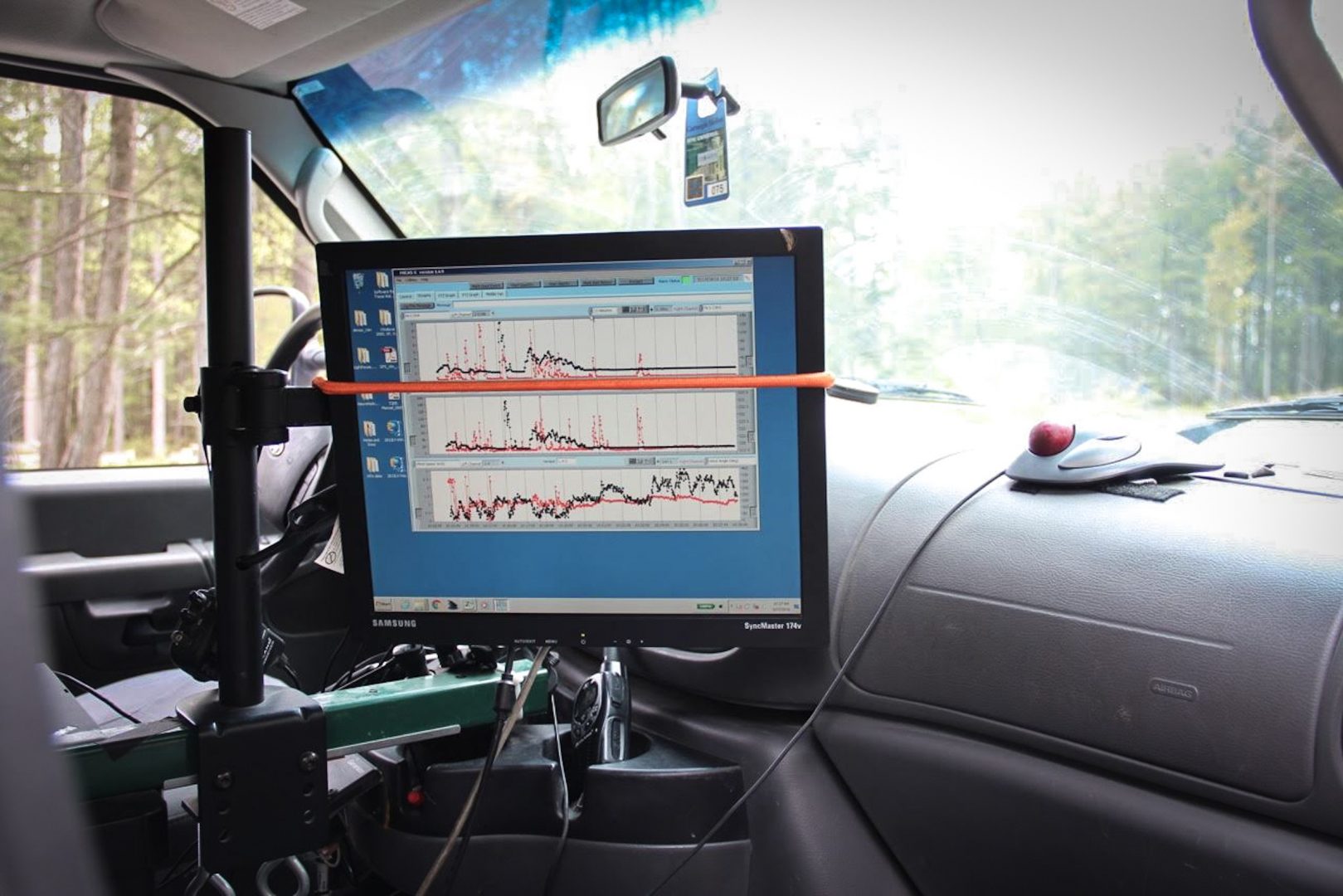
In this 2016 photo, scientists from Carnegie Mellon use mobile labs to detect methane leaks from the natural gas industry.
Reid R. Frazier / StateImpact Pennsylvania


In this 2016 photo, scientists from Carnegie Mellon use mobile labs to detect methane leaks from the natural gas industry.
Reid R. Frazier / StateImpact Pennsylvania

Reid R. Frazier / StateImpact Pennsylvania
In this 2016 photo, scientists from Carnegie Mellon use mobile labs to detect methane leaks from the natural gas industry.
Older, low-producing wells provide just six percent of oil and gas production in the U.S. But a new study found these wells account for half of all climate-warming methane pollution from the industry.
Scientists from the Environmental Defense Fund found in a new peer-reviewed study that the country’s 565,000 low-producing wells – those that produce 15 barrels of oil or the equivalent amount of gas a day – account for 50 percent of the oil and gas sector’s emissions of methane, a potent greenhouse gas.
Altogether, the wells emit about 10 percent of their methane – the main component in natural gas, and a greenhouse gas 80 times more potent than carbon dioxide over a 20-year period.
Scientists say drastic and immediate cuts to methane and other forms of carbon pollution by 2050 are necessary to keep the world from exceeding 1.5 degrees celsius of warming, the point at which human-induced climate change will be irreversible and severely disrupt human societies.
The 4 million metric tons of methane emissions from these wells are the equivalent of 21 million extra cars on the road, according to the EPA.
“These are high methane loss rates that underscore the high degree of methane waste occurring at these sites,” said Mark Omara, the study’s lead author. “A lot (of these are) old wells that suffer from what I call prolonged lack of attention from their operators. We’ve seen rusted pipes from which leaks occur…we’ve seen open hatches on tanks that continue to vent, and all of these issues can be fixed via regular monitoring and leak inspection repair.”
To calculate the emissions from low-producing wells, the study’s authors examined data from 240 sites from six separate independent studies of methane emissions. The study appears in the journal Nature Communications.
Amy Townsend-Small, associate professor of environmental science at the University of Cincinnati, said the study reinforced other studies, including hers, that showed lower-producing wells have a disproportionate impact on the country’s methane pollution.
“They’re such a small proportion of our national energy supply,” said Townsend-Small, who wasn’t directly involved in the study. (Townsend-Small’s data from a previous study was incorporated into the EDF team’s analysis.)
”We could start to plug them, and it wouldn’t make much of a difference in terms of our energy budget, but it could make a big difference in terms of our methane emissions.”
The Biden administration has proposed increased methane regulations for existing oil and gas wells around the country, including equipment upgrades and increased leak detection requirements. Those regulations exclude lower-producing wells, but the EPA says it could address these wells in a follow-up regulation later this year.
Pennsylvania, the country’s second largest oil and gas producing state, has methane regulations for new wells and is finalizing a regulation to limit methane and other volatile chemical pollution from existing wells, but those exclude low-producing wells. The state would incorporate any federal regulations on lower-producing wells once they are put into force, said Pennsylvania Department of Environmental Protection spokesman Neil Shader.
The prospect of new regulations on lower-producing wells is opposed by parts of the oil and gas industry. Jennifer Pett Marsteller, a spokeswoman for the Independent Petroleum Association of America, which represents smaller oil and gas companies, said “expansive new regulations” for low-producing wells “is the wrong approach when prices at the pump are at record highs and the Biden administration is calling on the industry to expand domestic production.”
Marsteller said her group’s analysis of “small wells” indicated that most emissions were from a few specific pieces of equipment “that can be managed without the expensive (leak detection and repair) programs demanded by” groups like the Environmental Defense Fund.
Pett said her group is anticipating another assessment of the issue by the Department of Energy, which has been working on a study of methane emissions of low-production wells since 2019, but has not yet published it.
StateImpact Pennsylvania is a collaboration among WITF, WHYY, and the Allegheny Front. Reporters Reid Frazier, Rachel McDevitt and Susan Phillips cover the commonwealth’s energy economy. Read their reports on this site, and hear them on public radio stations across Pennsylvania.
(listed by story count)
StateImpact Pennsylvania is a collaboration among WITF, WHYY, and the Allegheny Front. Reporters Reid Frazier, Rachel McDevitt and Susan Phillips cover the commonwealth’s energy economy. Read their reports on this site, and hear them on public radio stations across Pennsylvania.
Climate Solutions, a collaboration of news organizations, educational institutions and a theater company, uses engagement, education and storytelling to help central Pennsylvanians toward climate change literacy, resilience and adaptation. Our work will amplify how people are finding solutions to the challenges presented by a warming world.